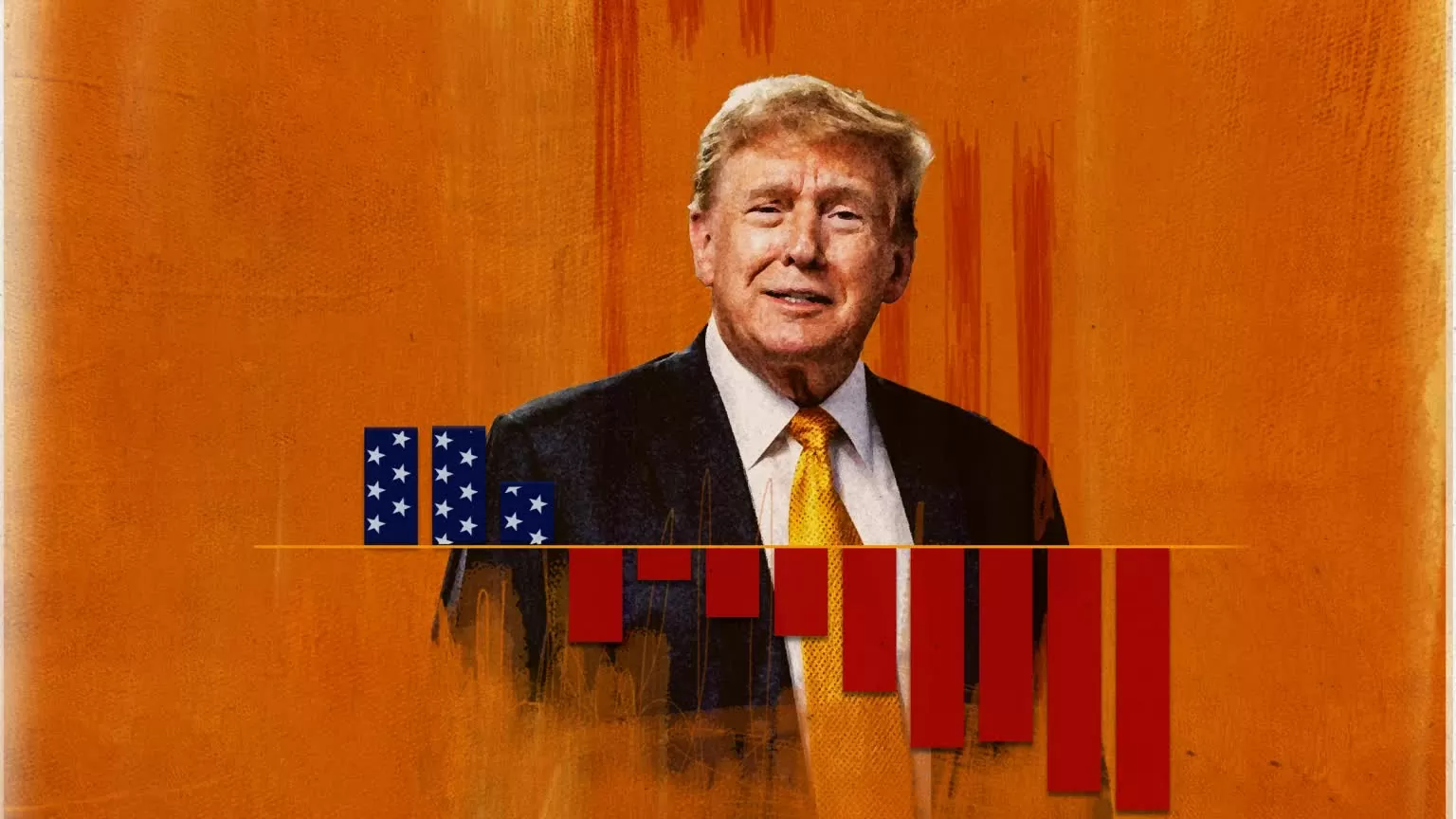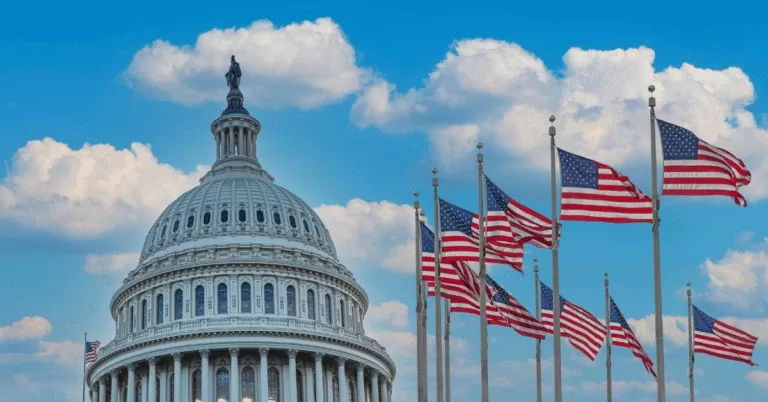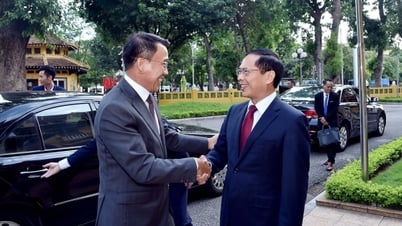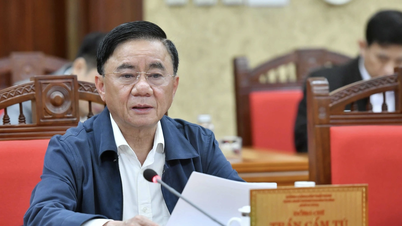The US financial situation is expected to be a headache for President-elect Donald Trump with only a short time left until his inauguration.
Global investors spent much of 2024 worrying about China's troubles with a property crisis and deflation. Next year, it will be America's turn to be in the hot seat.
While President-elect Donald Trump's trade war with Beijing is taking center stage, the massive imbalance between America's net foreign investment and federal debt is rapidly becoming more serious, forcing the Treasury to come up with a financial stability plan soon, or the world's number one economy will pay a heavy price.
 |
| The US financial situation is expected to be a headache for President-elect Donald Trump during his second term in the White House. (Source: The Sidney Morning Herald) |
Surrounded by Risk
The bill for the Biden administration’s debt relief to support the post-Covid-19 economy is coming due, as foreign investors show less interest in U.S. assets, and the risks of the massive tariffs Trump is planning to impose upon his return to the White House.
In just two weeks, President Biden will officially hand over power to Donald Trump, along with a national debt of up to $36 trillion, the highest in history and the largest national debt in the world in nominal terms.
The US national debt is the amount of money the federal government owes to creditors. Creditors can be individuals such as US citizens or small foreign investors as well as states and large foundations.
Under a Trump 2.0 administration, however, the United States will face a fiscal crossroads: push public spending to the red line or come up with a strategy to reduce Washington's dependence on imports.
The tariffs and trade barriers that the US president-elect has imposed are expected to boost inflation and curb consumption, meaning slower US growth and less demand for Chinese goods at a time when Beijing is facing weak retail sales and deflation.
Chinese households may even have less means to buy goods from the US, forcing Beijing to resort to weakening the yuan to keep its exports competitive, leading to a giant currency war.
 |
| US national debt surpasses $36 trillion. (Source: Rockymountainvoice.com) |
Takatoshi Ito, an economist at Columbia University (USA), commented: "In addition to alienating friends and partners, Mr. Trump's tariff policy may not promote the clear goal of reducing the trade deficit for the US.
According to this expert, if other countries apply retaliatory tariffs, total exports from the US - and global trade in general - will likely decline. Moreover, high US tariffs will boost domestic inflation, forcing the Federal Reserve (Fed) to raise interest rates, causing the US dollar to appreciate, reducing exports and increasing imports.
Mr. Takatoshi Ito warned that the tariff policy will also increase the US fiscal deficit because when Mr. Trump promised comprehensive tax cuts without cutting spending to compensate for the lost revenue. When the fiscal deficit weakens national savings and investment, the trade deficit will also increase.
"Like President Ronald Reagan in the 1980s, Mr Trump is likely to cause twin deficits. Rising commodity costs, combined with potential supply-side constraints on the labor market due to Mr Trump's proposed immigration policies, could also push inflation up by 1%," said James Knightley, chief economist at ING Bank.
Of course, Mr Trump will certainly accuse Washington's trading partners of "dumping" goods or maintaining artificially low exchange rates.
"Some observers have speculated that Scott Bessent, Trump's pick for Treasury Secretary, could call a special meeting at the G20 to pressure other countries to revalue their currencies against the dollar, a move reminiscent of the 1985 Plaza Accord," Ito said. "Unless the president-elect takes a cautious approach to tariffs on imports, Washington will be constrained in terms of both economic momentum and global influence."
All of this is happening against a backdrop of declining foreign demand for U.S. government debt. Over the past decade, foreign official institutions have steadily reduced their holdings of U.S. Treasury bonds, a gap that has been filled by domestic financial institutions.
There were times in 2024 when investors sold off U.S. Treasury bonds because they thought the Fed would not be able to cut interest rates quickly enough while the economy maintained a steady growth pace. Looking ahead to 2025, U.S. Treasury bond investors are facing many challenges, including concerns about a large amount of Treasury bills coming due.
According to CNBC , nearly $3 trillion of U.S. government debt is due to mature this year, most of it in Treasury bills, a short-term debt that the U.S. Treasury has issued in large quantities in recent years. The U.S. government wants to extend the maturity of this Treasury bill debt by issuing new bonds with longer maturities to roll over the debt, so the upcoming maturity of such a large amount of short-term Treasury bills could mean new difficulties for investors.
The problem is that the market may not even be ready to absorb the expected deluge of US Treasury issuance this year as the government borrows to finance a nearly $2 trillion budget deficit, let alone the long-term bonds issued to roll over T-bill debt.
“The US government will have a budget deficit of trillions of dollars until after 2025, so bond issuance will overwhelm treasury bill issuance,” said Tom Tzitzouris, head of fixed income at Strategas Research Partners.
Are Trump 1.0 or Biden policies more effective?
Economists agree that it is time for the United States to reduce its dependence on imports.
The key is to increase productivity, spark innovation, and create a new production model. This is coupled with increased training to strengthen the workforce, motivate a new generation of industrial entrepreneurs, and improve infrastructure. In addition, more investment is needed in semiconductors, artificial intelligence, and other areas to enhance America’s innovation role.
The fact that American "giants" with valuable brands such as Boeing, General Motors or Intel are losing influence globally is also a problem that requires Washington to make efforts to revive economic symbols.
President Biden has pivoted somewhat toward strengthening and strengthening the domestic economy. Specifically, the CHIPS and Science Act, which Biden signed into law in 2022, deploys $300 billion to boost domestic research and development. The incumbent president has also taken steps to encourage innovation, improve U.S. semiconductor capacity, and increase productivity.
The bill also marks a departure from Trump 1.0, which focused on a $1.7 trillion tax cut that did little to boost competitiveness or boost domestic capacity.
According to economist Ken Heydon at the London School of Economics (UK), "correcting" the trade imbalance during Mr. Trump's first term as President caused the US trade deficit to skyrocket to its highest level since 2008, from 481 billion USD to 679 billion USD.
 |
| According to economic experts, neither Trump 1.0 nor Biden's four years in office have presented credible plans to compete with China. (Source: Getty) |
Mr Heydon added that Washington's expansionary fiscal policies mean the world's number one superpower will continue to spend more than it produces, clearly perpetuating "the fundamental reason for the trade deficit in the first place".
This policy both directly by raising input costs, stifling productivity-enhancing competition, promoting retaliation, and worsening the terms of trade, and indirectly by appreciating the currency and allowing wages to rise in import-competing industries.
Unfortunately, according to economists, neither Trump 1.0 nor Biden's four years in office have presented credible plans to compete with Beijing's trillion-dollar effort to lead the future of electric vehicles, robots, semiconductors, renewable energy, artificial intelligence, biotechnology, aviation, high-speed rail, etc.
Concerns about the USD
The series of tariffs that Mr Trump plans to impose on countries as soon as his new administration is established could run into a problem, which according to economist David Lubin of the Chatham House research institute, is "a dollar problem".
Mr. Lubin noted that in recent months, Mr. Trump “has made clear his desire for a weaker exchange rate to support the competitiveness of U.S. exports and help reduce the trade deficit. However, “the market seems to have sensed since the election,” Mr. Lubin said, “that the more likely outcome is that his policies will strengthen the greenback. The risk is that the dollar — already expensive — continues to be overvalued, and this could increase the risk of global financial instability.”
The current account deficit – the broadest measure of a country’s trade deficit and a rough but useful gauge of financial vulnerability – was just over 3% of GDP last year, according to Mr. Lubin.
That is only about half the level reached in 2006, just before the 2008 global financial crisis, meaning the risks from an overvalued dollar could extend into the latter part of Mr Trump’s second term.
“A rising dollar can often be bad news for the global economy. It tends to slow world trade growth, limit developing countries’ access to international capital markets and make it harder for countries with weaker currencies to control inflation,” Mr. Lubin commented.
Source: https://baoquocte.vn/nam-2025-den-luot-my-ngo-vao-ghe-nong-how-will-ong-trump-doi-pho-ra-sao-voi-khoan-no-quoc-gia-cao-ngat-nguong-299695.html



































































































Comment (0)